Fountain Hills, Arizona – join us as we discover the art of an oasis. It’s a desert odyssey that suspends disbelief as water shoots 330 feet (100 m) high into the desert sky; raptors hang in frozen vigilance over a nest filled with eggs; and past presidents sit waiting for a conversation – or at the very least an Instagram moment.
Disclosure: This post contains affiliate links. If you buy something from one of our affiliates, we receive a small commission at no extra charge to you. Thanks for helping to keep our blog up and running!
Table of Contents
Fountain Hills: Arizona and the art of an oasis
To be honest, we didn’t know a thing about Fountain Hills until we ventured into Maricopa County to do some camping and mountain biking at McDowell Mountain.
Arizona’s Fountain Hills was created by a property development company. A towering desert fountain of water is its star attraction. The fountain’s first rise to prominence was over half a century ago!
I admit when I first saw it, I had concerns about water waste in the desert. It’s an issue. To be fair, this is not fresh water, it’s recycled. The water travels over 200 miles (322 km) from the Colorado River via the canals of the Central Arizona Project. It is used in homes, schools, and businesses. Wastewater is then collected, treated, and stored.
Water, water, everywhere?
- Water travels 222 miles (357 km) to get to Fountain Hills
- The average person uses 80-100 gallons (303- 378 l) of water every day
- In 2019 Fountain Hills population produced about 2 million gallons (7.6 million l) of used – a.k.a wastewater – a day
- Fountain Hills makes 20% more wastewater during the winter due to an increase in seasonal residents and visitor useage
- The district’s ASR wells can store over 730 million gallons (2.7 billion l) of recycled water, more than 7x the volume of Fountain Lake.
- Golf courses and parks can use up to 3 million gallons (11.3 million l) of water a day in the summer
A Fount of knowledge
Seasonal use for freshwater and offsetting recycled water is greater in the winter months. Excess recycled water is stored underground until it is needed in summer months for town-owned parks and to fill Fountain Lake – which feeds the fountain.
I’m still on the fence about water use in the desert, but the fact remains that this fountain and its surrounding park lands with dozens of statues ringing the lakeshore are impressive.
The fountain of Fountain Hills
- first ascension of the Fountain Hills centerpiece was on Dec. 15, 1970
- every St. Patrick’s Day the fountain turns green
- it operates every hour on the hour from 9 a.m. to 9 p.m. daily
- the fountain draws from a 33-acre (133 ha), million-gallon (3.7 million l) lake
- normally reaching 330 feet (100 m) in height, the fountain can reach 560 feet (171 m) on special occasions with three pumps running
- when winds exceed 10 mph (16 kph), the fountain doesn’t operate
Art in the oasis
Wind stopped the fountain from ascending during our brief visit, but what really made Fountain Hills for us was discovery of the vast collection of public art. There’s sculpture, paintings, photographs, and fountains – all located throughout the town. In fact, there are over 150 pieces of public art to discover!
Where to begin? We started with a classic newspaper delivery boy – because bibliophiles love art, too! In a cozy courtyard near the library entrance, well over a dozen statues whet the art aficionado’s whistle.
The Fountain Hills Public Art Committee curates an ever-growing collection of public art in the Town of Fountain Hills. There are currently over 150 pieces in the complete assemblage scattered around town.
We wandered in awe past classic bronzes to the tin man, from prehistoric to modern, from grace to grunt – and were enchanted with every step.
After finishing our business at the library, we headed out on a stroll down to the lakeshore where, much to our delight, art is even more plentiful.
See more with a lakeside stroll in Fountain Hills
We started at “Fount Rushmore” – where past presidents await. Abraham Lincoln sits relaxed and ready for a conversation – or at the very least an Instagram moment.
There is a map of the statues and their locations in Fountain Hills, but we preferred to wander, strolling along the lakeshore in a clockwise fashion.
We strolled past raptors frozen in vigilance over a nest of eggs. The “Second Mesa Maiden” by Martha Pettigrew looks vaguely like Princess Leia of the Star Wars fame – but it’s actually the other way round with hair stylists from the movies borrowing from the past. Coyotes howl and bobcats slink in quiet pursuit – all sculpted to perfection.
Rounding the lake, we saw a sign pointing to the Lake Overview Trail.
Hmmm… wonder where it goes?
Of course we had to check it out. It’s a short but sweet little detour that climbs gently to an overview of Fountain Hills, the lake, and its namesake fountain. Worth the little bit of extra effort, IMHO.
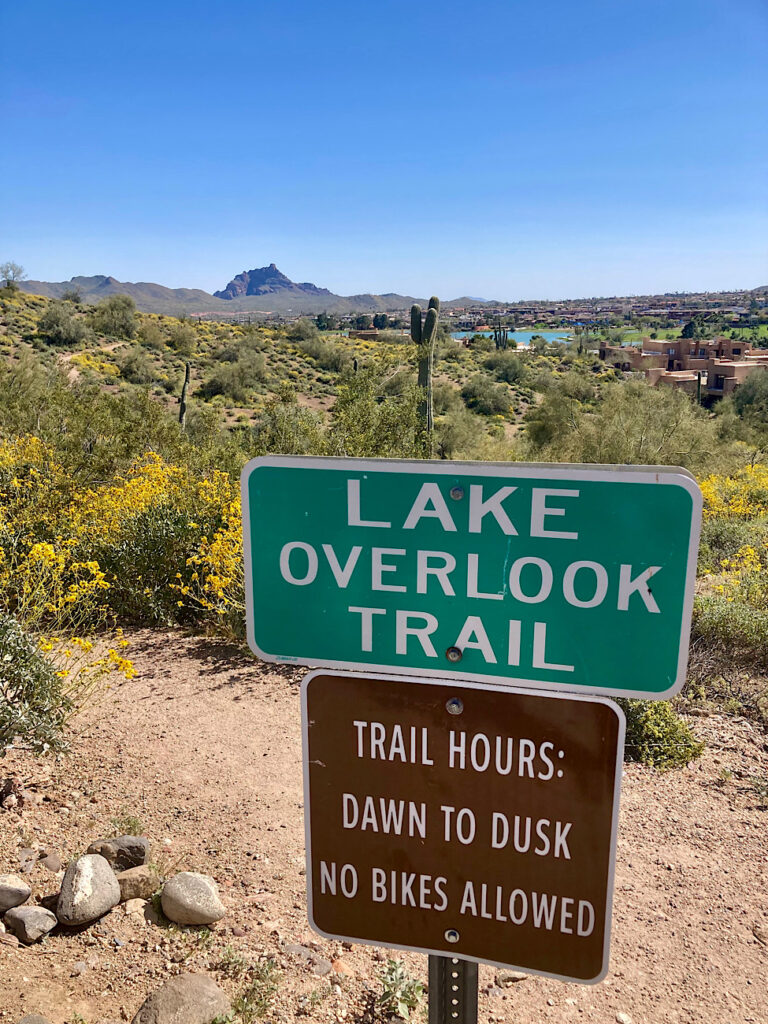
Back down we finished the loop, standing silent for a moment Veteran’s Memorial.
And with that our desert odyssey finding art in the oasis of Fountain Hills was complete. Well not quite complete, there are so many more pieces of art to discover…
… next trip.
Yes, we’ll be back to continue our Arizona art adventure; maybe we’ll see you there!
When you go on an oasis art tour in Arizona
Fountain Hills Library is located at 12901 N La Montana Drive in Fountain Hills. It’s an easy, less than 15-minute stroll to Fountain park – or 3-minute drive to lakeside parking at 12925 N Saguaro Blvd (off E El Lago Blvd).
Fountain Park (lakeshore) loop is a flat 1.2-mile (2 km) trail. There is the option to add in another 1.2 (2 km) for the Lakeshore Overlook trail which has about 200 feet (60 m) of elevation gain.
Camping is available in the nearby Maricopa County Regional Park (McDowell Mountain).

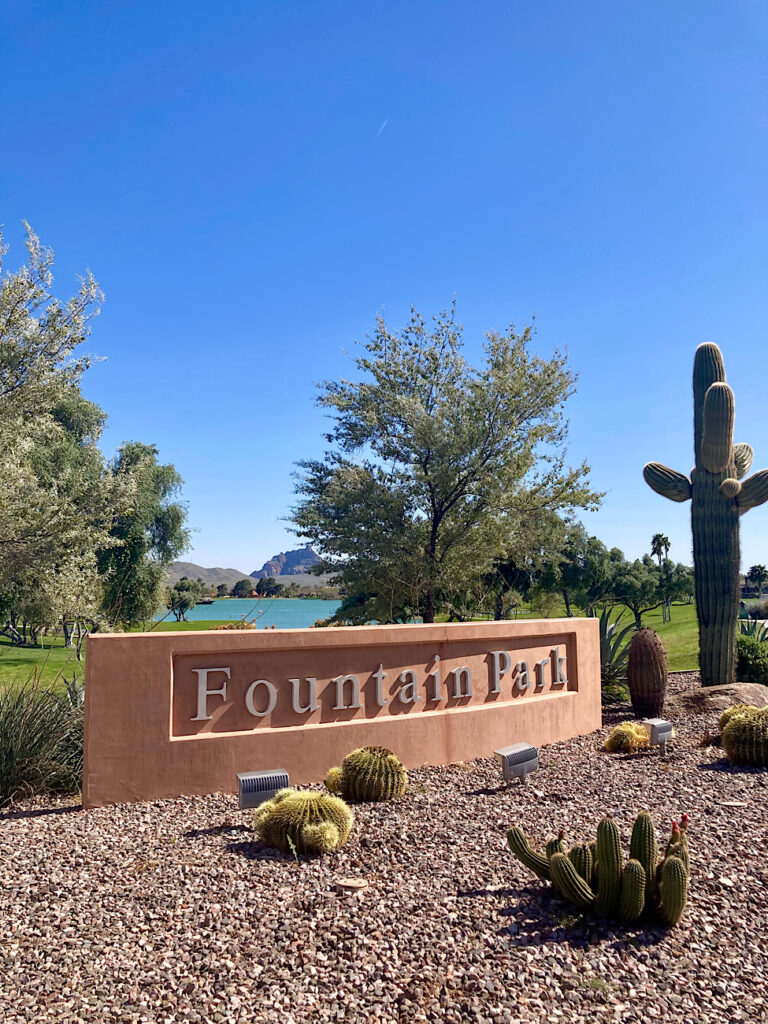
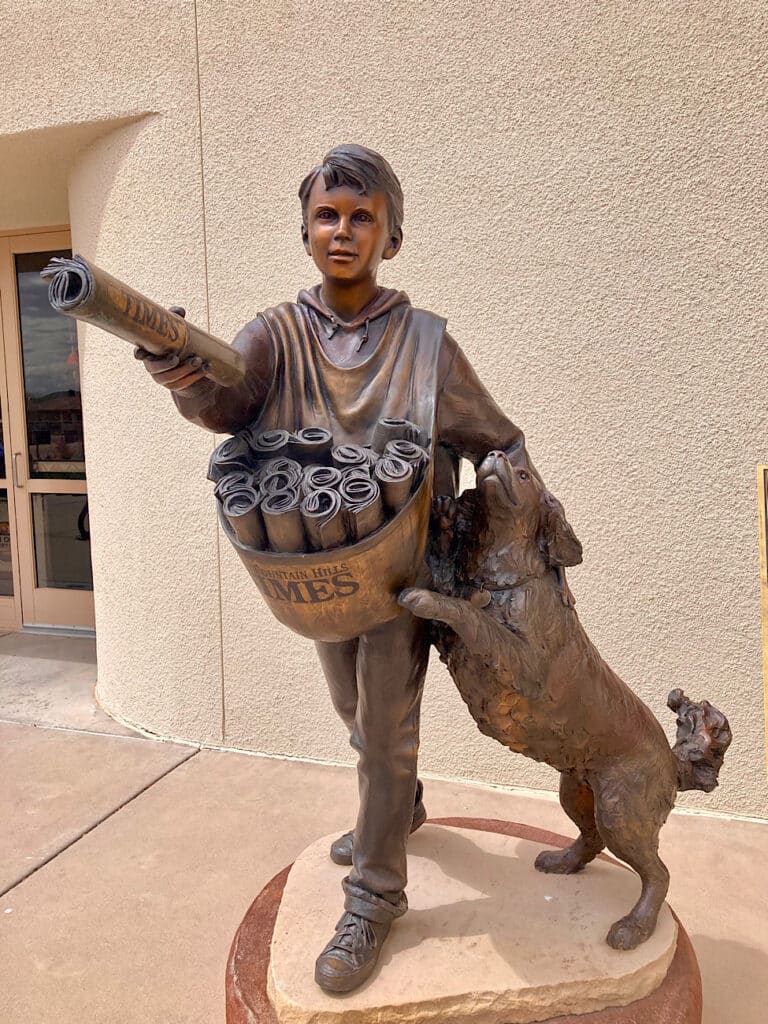
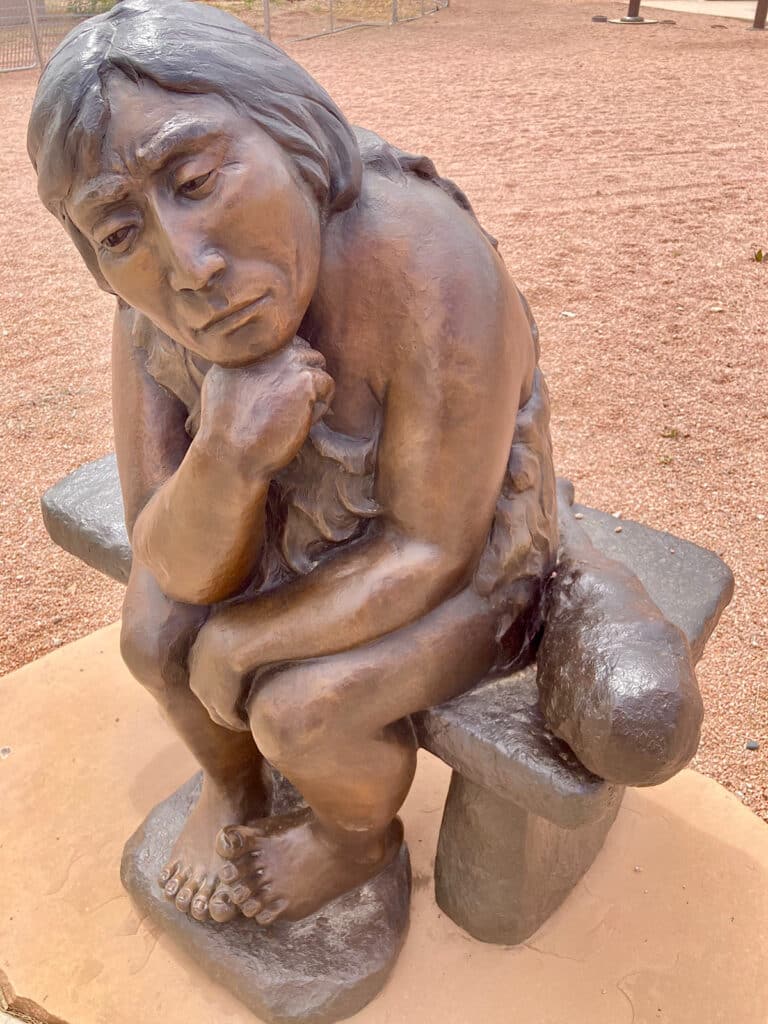
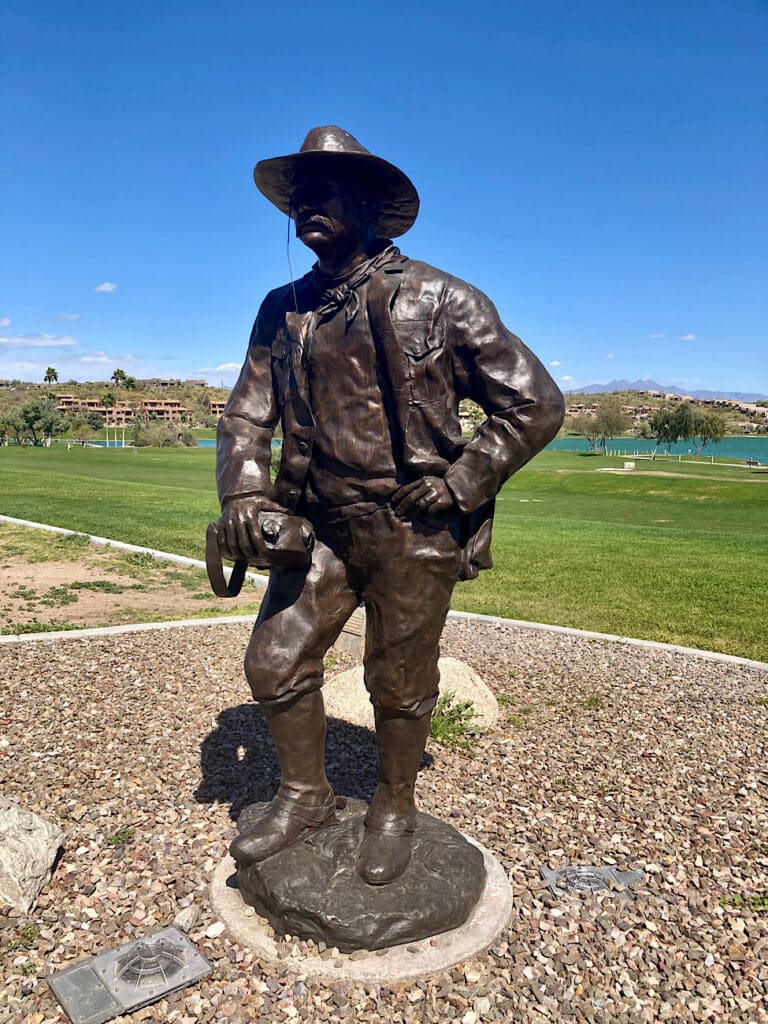
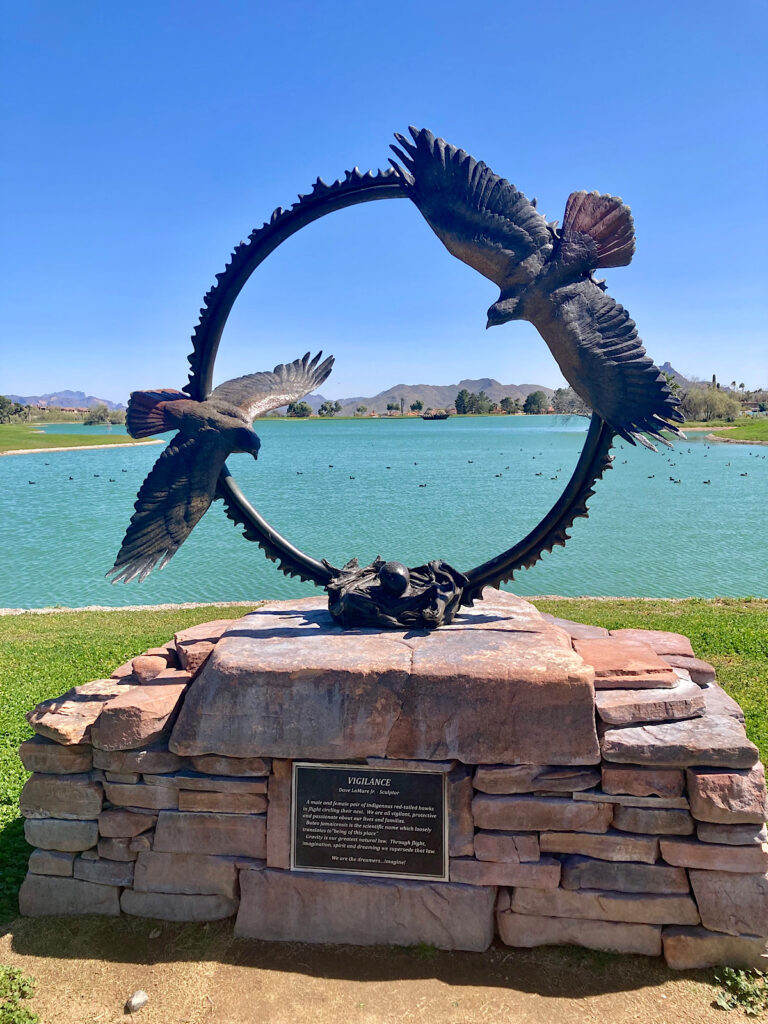
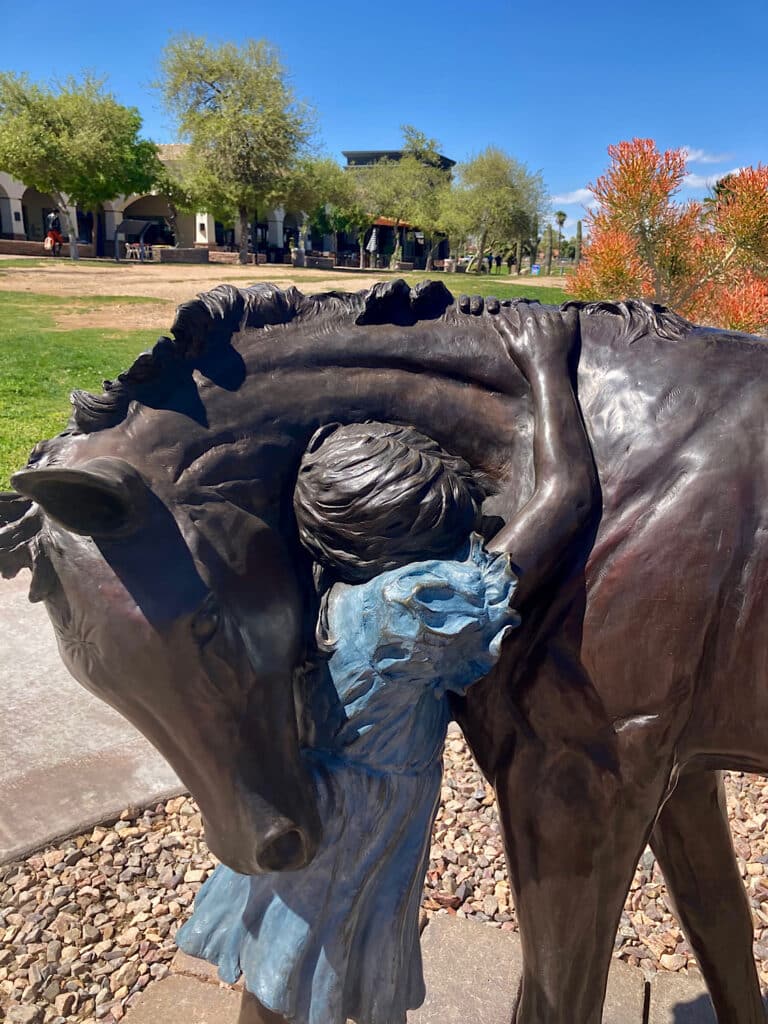
Sounds like a fun place to visit!
A great walk around a lake dotted with beautiful art – what’s not to love?!